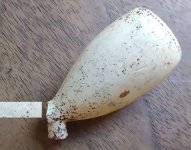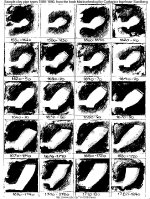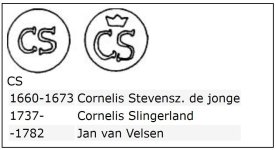Sam Holden
Jr. Member
- Sep 26, 2020
- 71
- 115
- Detector(s) used
- Minelab Equinox 800, Bounty Hunter Tracker iv
- Primary Interest:
- All Treasure Hunting
Hey y, all!
I found this pipe bowl while metal detecting in the woods. It was laying on the surface besides being covered up by a few leaves. Can anyone identify this pipe? It's missing the stem, but it has what appears to be the letters CS And then maybe a crown above that? Any help identifying this would be much appreciated




 .
.
I found this pipe bowl while metal detecting in the woods. It was laying on the surface besides being covered up by a few leaves. Can anyone identify this pipe? It's missing the stem, but it has what appears to be the letters CS And then maybe a crown above that? Any help identifying this would be much appreciated














